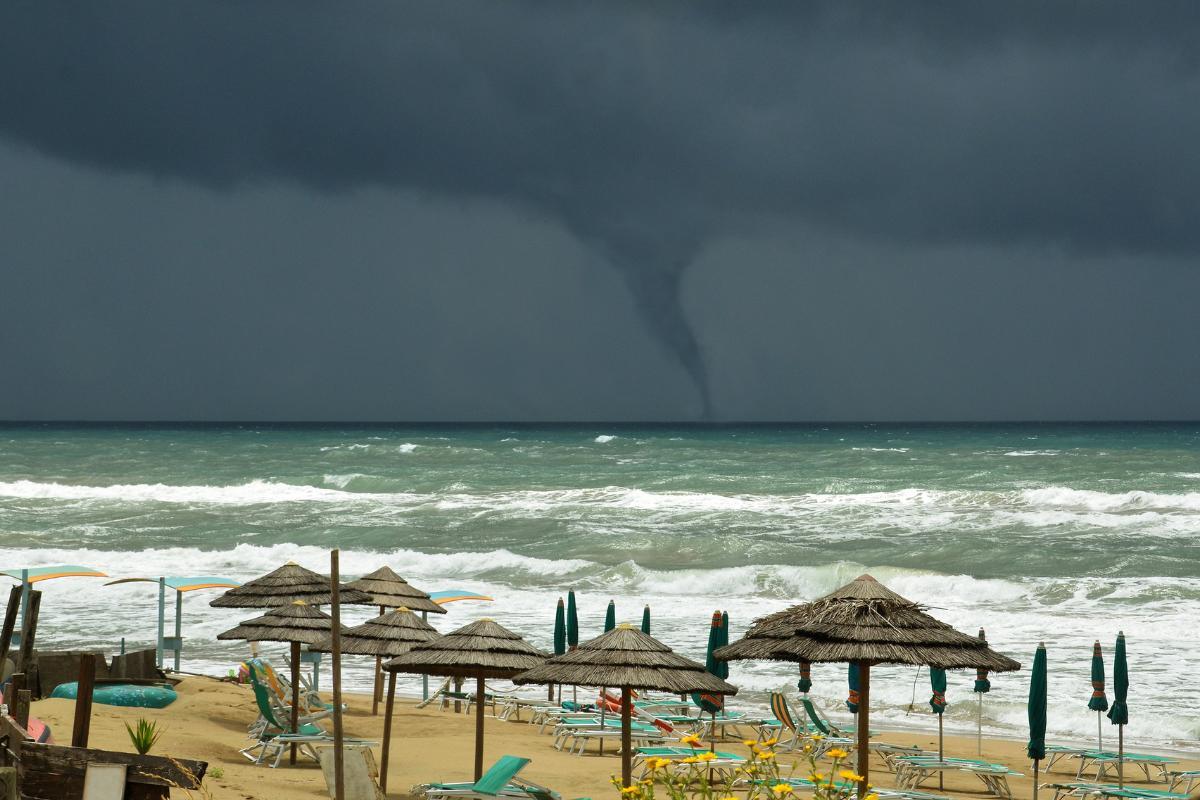Difference Between a Waterspout and a Tornado


Waterspouts are a weather phenomenon which appear as if a tornado has formed over a large body of water. They consist of eddies that are usually connected to cumuliform clouds. The base of a waterspout can be formed by water spray. This meteorological phenomenon is frequently confused with tornadoes that occur in water, but it is important to know that a tornado and waterspout are different types of meteorological phenomena.
In this thedailyECO article, we explain the difference between a waterspout and a tornado. We provide a detailed explanation of how waterspouts are formed and why they resemble a tornado over water.
What is a waterspout and why does it occur?
A waterspout is a meteorological phenomenon that is characterized as a thin vortex that forms on the surface of water. It occurs generally in warmer bodies of water such as oceans, seas, lakes or rivers. Although they are often associated with thunderstorms or storm clouds, waterspouts can develop in different ways.
Learn more about different bodies of water with our article on the difference between ocean vs. sea.
In its most common form, a waterspout is created when a column of warm, moist air rises from the water surface. When this happens, it can interact with a column of cold air descending from a developing storm. This interaction can generate a counterclockwise or clockwise rotation.
In doing so, the waterspout creates a kind of funnel that extends from the water surface towards the clouds. At this point, the waterspout is classified as a ‘non-supercell waterspout’ as it is not directly related to a supercell storm. It is this funnel of upwards water which resembles a tornado.
There are two main types of waterspouts:
- Non-supercellular waterspouts: the most common type of waterspout which tend to be less destructive. They tend to have weaker windforce behind them and their duration lasts for a shorter period of time.
- Supercellular waterspouts or supercells: are linked to more intense storms and can be more dangerous. Supercellular waterspouts can be more powerful and long-lasting, causing more damage to anything that gets in their trajectory.
It is important to note that waterspouts are typically smaller in scale than land-based tornadoes. However, they can still pose a risk to vessels in the water. In rare cases, they can make landfall, causing damage to the coast.

How a waterspout forms
Now we know what a waterspout consists of, we will likely want to know more about how they are formed. Waterspout formation occurs in the following way:
- The formation of a waterspout is due to a combination of meteorological and atmospheric factors that interact in the atmosphere over warm bodies of water. They tend to thrive in warmer waters, such as those found in tropical oceans and seas during the summer months. Warm water provides the heat source needed to lift the air and generate atmospheric convection.
- Convection is the process by which hot and humid air rises, i.e. moving from the water's surface upwards. When the air above hot water rises, it creates an area of low pressure at the surface.
- This low pressure zone draws in surrounding air, generating an upward airflow.
- In many cases, warm air rising from the surface of the water comes into contact with a colder air mass descending from a developing storm or a cold air mass passing over the water.
- This temperature and pressure difference between hot air and cold air can cause counterclockwise or clockwise rotation.
- In terms of the formation of the waterspout, the initial rotation generated by the interaction between warm air and cold air can intensifies. It extends downward from the clouds towards the water surface, creating the characteristic funnel of a waterspout. If this rotation reaches sufficient intensity, it becomes an observable waterspout.
The intensity of a waterspout can vary significantly. They can range from weak and short-lived waterspouts to more powerful and long-lasting weather event. Such intensity depends on factors such as water temperature, wind speed and direction in different layers of the Earth's atmosphere, as well as the presence of supercell storms.

Differences between a waterspout and a tornado
Now we know how a waterspout is formed, we can compare it with a similar weather phenomenon. This is the case when we look at the differences between a waterspout vs. a tornado:
Geographic location
- Waterspout: waterspouts form on the surface of water, usually in oceans, seas lakes or rivers. They can move towards the coast and, on rare occasions, make landfall, but their origin is in the water.
- Tornado: tornadoes develop over land and usually form in continental areas. They can occur in a wide variety of geographic environments, from plains to mountains.
Cause of formation
- Waterspout: formed by the interaction of warm, moist air above the water surface with colder air descending from the upper layers of the atmosphere or coming from a nearby storm.
- Tornado: tornadoes mainly originate in the context of strong storms, especially supercell ones. The rotation in the atmosphere is due to the interaction of different air masses and the presence of a strong updraft within the storm.
Intensity and duration
- Waterspout: waterspouts are generally weaker and shorter in duration compared to tornadoes. Its winds are usually less intense and usually last less time.
- Tornado: tornadoes can vary widely in intensity, from weak tornadoes to extremely violent tornadoes (EF5). Some tornadoes may last only a few minutes, while others may persist for several hours.
Size and scale
- Waterspout: waterspouts tend to be smaller in scale and size compared to land-based tornadoes. Their funnels are usually narrower and less developed.
- Tornado: ground tornadoes may have wider and more developed funnels, making them more destructive in terms of property damage.
Travel route
- Waterspout: they usually move along the surface of the water, following the direction of the winds and ocean currents.
- Tornado: tornadoes can move in any direction, including turns and sudden changes in course, making them more unpredictable in their path.
After reading this, you now know better what a waterspout is and how it is produced, as well as its difference from a tornado. You may want to know about other weather phenomena formation with our article on how is a hurricane formed?
If you want to read similar articles to Difference Between a Waterspout and a Tornado, we recommend you visit our Meteorological phenomena category.







